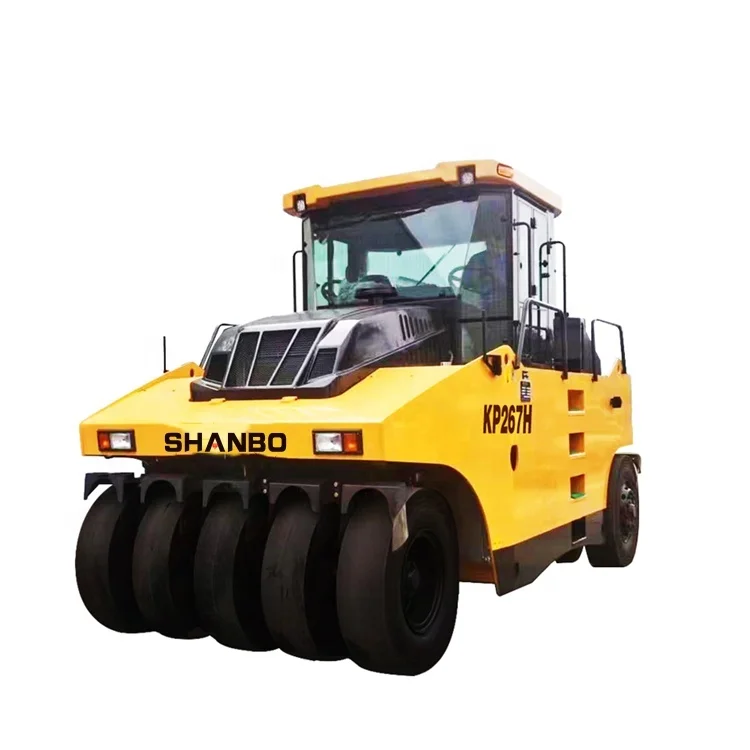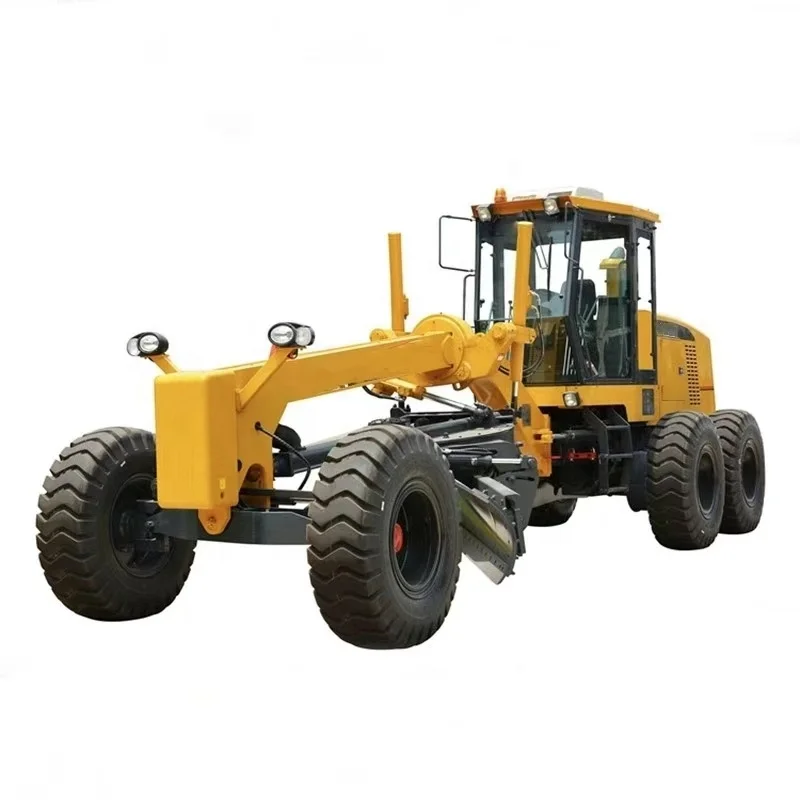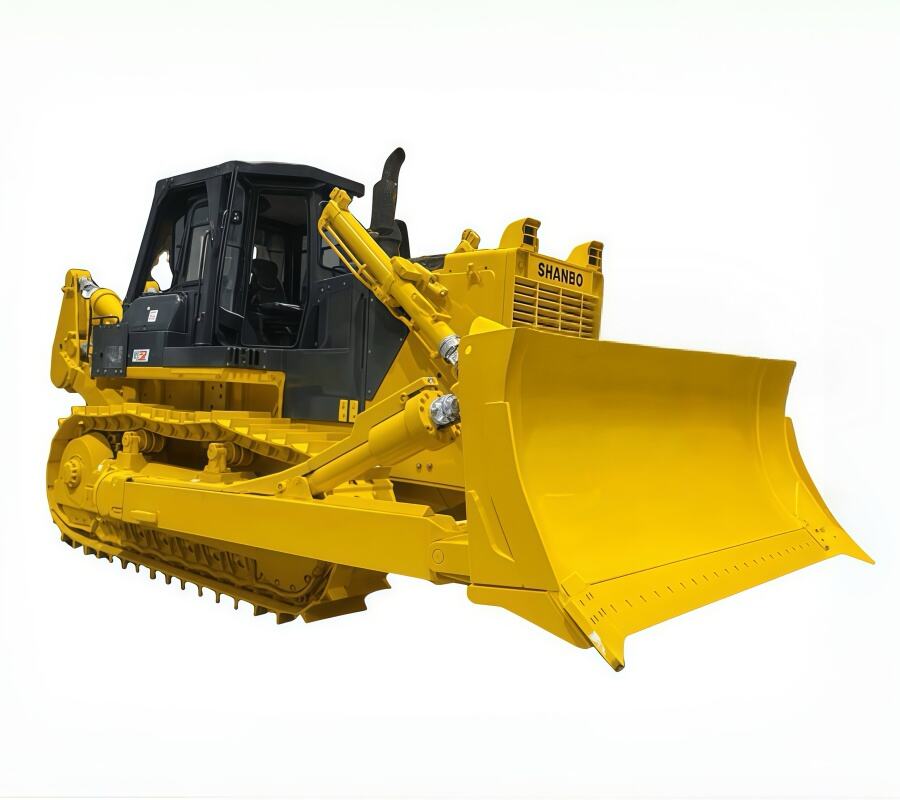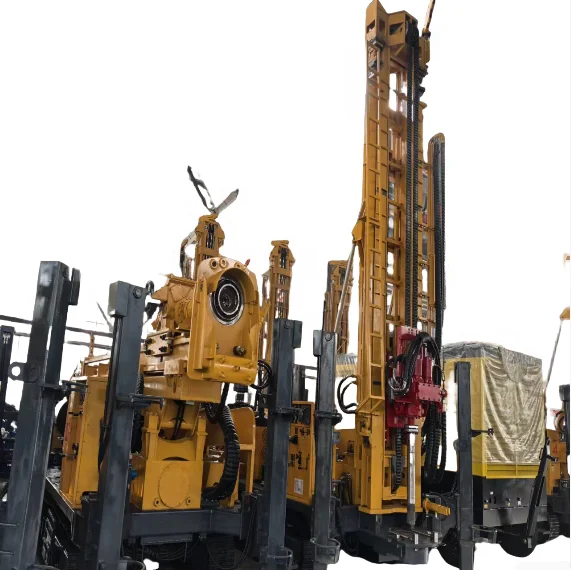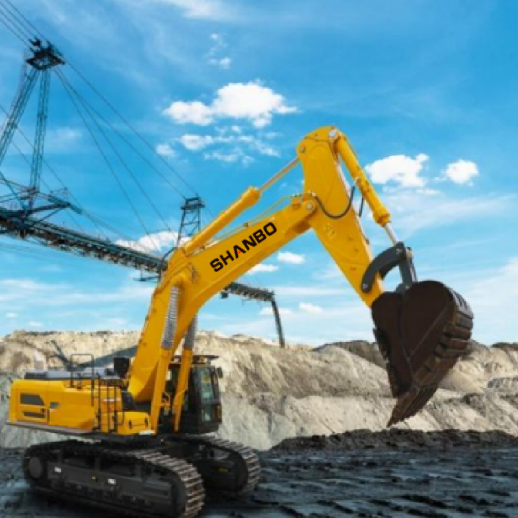How to Operate a Bulldozer in Different Terrain Types
Understanding Bulldozer Operations Fundamentals
Key Components of a Bulldozer
Understanding the key components of a bulldozer is crucial for efficient operation and maintenance. A bulldozer typically comprises major parts such as the engine, transmission, hydraulic system, and undercarriage, each playing a vital role in its functionality.
Engine: The powerhouse of a bulldozer, providing the necessary force to move through tough terrains.
Transmission System: Controls the power generated by the engine, aligning it with the bulldozer's speed and movement.
Hydraulic System: Manages the movement of the blade, allowing fine control over the earth that needs to be moved or leveled.
Undercarriage: Includes tracks that provide stability and traction, especially in muddy or uneven terrains.
Recognizing the specifications of these components is important for effective operation. Technological advancements in bulldozer design, such as enhancements in hydraulic systems and the use of more durable materials, have increased their efficiency and lifespan.
Modern bulldozers incorporate innovations like GPS and automated controls to refine grading accuracy and operator convenience, making them indispensable in construction machinery. Shanbo bulldozers, for instance, are known for integrating such advanced technologies, ensuring superior performance across various terrains.
Safety Protocols for Heavy Equipment Operation
Safety should always be a top priority when operating heavy equipment like bulldozers. There are several essential safety measures that every bulldozer operator must adhere to in order to mitigate risks.
Training and Certification: Operators should undergo rigorous training and obtain necessary certifications before controlling a bulldozer, as this ensures they are knowledgeable about machine operation and safety protocols.
Personal Protective Equipment (PPE): Essential for all operators, PPE includes items like hard hats, gloves, and protective goggles. Proper use of PPE is critical in maintaining high safety standards on construction sites.
Hazard Awareness: Identifying potential hazards, such as uneven surfaces or blind spots, and implementing strategies to avoid accidents are integral. Regular safety drills and updates on new safety practices can help in preventing mishaps.
By maintaining strong emphasis on these safety protocols, we can minimize the occurrence of accidents and ensure a safe working environment for all bulldozer operators.
Pre-Operation Inspection Checklist
Before operating a bulldozer, conducting a thorough pre-operation inspection is imperative to ensure safety and functionality. A systematic approach can prevent unexpected breakdowns and enhance operational efficiency.
Fluid Levels and Brakes: Check all fluid levels, including hydraulic, engine oil, and coolant. Ensure brakes are responsive and in optimal condition.
Track Conditions: Inspect the tracks for wear and tear to maintain proper traction and stability during operations.
Tools and Documentation: Utilize the right tools for inspection and keep accurate records for maintenance checks. This helps in timely troubleshooting and repairs.
Regular inspections not only prevent mechanical failures but also extend the lifespan of the bulldozer, ultimately ensuring safer work conditions and uninterrupted operations. Specifically, bulldozers from Shanbo are designed with easy-to-access inspection points to facilitate such routine checks efficiently.
Operating Crawler Bulldozers in Soft/Muddy Terrain
Track Maintenance for Optimal Traction
Maintaining crawler bulldozer tracks is crucial for ensuring maximum grip on soft surfaces. Regular maintenance practices like cleaning tracks and removing debris are pivotal. The tension and alignment of tracks play a significant role in optimizing performance, with incorrect settings leading to decreased traction.
Operators should routinely inspect and adjust tracks according to the specific terrain. This not only maintains efficiency but also prevents accidents caused by slipping or losing control. Overall, diligent track maintenance leads to safer, more efficient operations on challenging terrains.
Blade Angle Adjustments for Material Displacement
Precise blade angle adjustments significantly influence the movement of materials during bulldozer operations. It’s essential to determine the best blade angle based on the type and consistency of material being displaced. For example, sand may require a different angle than denser clay.
Incorrect blade settings can lead to higher fuel consumption and extended operation times, highlighting the need for careful adjustments. Successful material displacement often involves real-world scenarios where fine-tuning the blade angle made the difference between a task smoothly completed and a prolonged operation.
Preventing Sinkage Through Weight Distribution
Understanding weight distribution is key to maintaining bulldozer stability, especially in soft or muddy terrains. Properly balancing the load is essential for preventing sinkage, which can derail operations and reduce efficiency. Strategies like distributing weight evenly across the machine can prove beneficial.
Case studies often highlight operational challenges caused by improper weight distribution. By analyzing these scenarios and implementing the best practices, operators can adjust load distribution to handle varying terrains more effectively, ensuring stable and efficient bulldozer performance.
Navigating Rocky Landscapes with Dozer Equipment
Ripper Attachment Utilization Strategies
When tackling rocky landscapes, the ripper attachment is indispensable for breaking through tough materials. There are various types of ripper attachments designed for specific functions, including single-shank and multi-shank rippers. Each type is tailored to different soil and rock conditions, allowing operators to optimize their bulldozer's efficiency.
To achieve maximum effectiveness, it's crucial to follow best practices such as using the ripper at the correct angle and depth to ensure smooth excavation processes. Safety is paramount, so incorporating protective gear and awareness of the operating environment helps mitigate risks. Success stories abound where operators skillfully utilize rippers to navigate rocky terrain with efficiency and precision.
Vibration Dampening Techniques
Reducing vibrations during bulldozer operations not only enhances operator comfort but also prolongs the life of the machinery. Implementing vibration-dampening techniques is essential to ensure smooth operations and reduce mechanical wear. Utilizing specialized dampening systems or selecting bulldozers with built-in features can significantly mitigate vibrations.
Research highlights that reducing vibrations leads to improved performance and less fatigue for operators. In real-world applications, bulldozers equipped with such technologies have shown marked improvement in handling rocky terrains, offering a smoother ride and lessens the burden on the machine's components.
Protecting Undercarriage Components
The undercarriage of a bulldozer is particularly vulnerable when operating on rocky surfaces. Damages to these components can lead to costly repairs and downtime. Therefore, implementing preventative measures for undercarriage protection is vital. Strategies such as regular inspections, using rock guards, and replacing worn components promptly help maintain the integrity of the undercarriage.
Recommended maintenance practices include cleaning debris and checking for signs of wear and tear after each shift. Throughout the industry, successful case studies demonstrate how these measures effectively extend the lifespan of undercarriage parts, ensuring consistent and reliable bulldozer performance in challenging environments.
Sloped Terrain Operation for Hydraulic Bulldozers
Controlling Grading Precision on Inclines
Precision grading on slopes is vital for construction and land management, ensuring that projects are completed safely and efficiently. Hydraulic functionalities on bulldozers are crucial for maintaining control and precision when working on inclines. These functions include automatic blade controls and real-time feedback systems which help in achieving the desired grade with minimal rework.
Instruments such as laser leveling systems and GPS technology enhance grading accuracy, providing operators with precise measurements. For instance, a project involving steep slope grading in a mountainous area demonstrated the effectiveness of these technologies in maintaining grading precision. This example showcases the critical role of advanced instruments and techniques in achieving successful outcomes on challenging terrains.
Counterweight Management for Stability
Effective counterweight management is essential for maintaining stability during bulldozer operations, especially on slopes. Proper positioning of counterweights helps balance the bulldozer, mitigating the risks of tipping and ensuring operator safety. Techniques like calculating the correct counterweight based on the slope's angle and the materials being handled are critical. Incorrect counterweight management can lead to increased tipping risks, endangering both the operator and the machinery.
Learning from experienced operators, best practices include regular weight distribution checks and using adjustable counterweight systems for dynamic stability control. By incorporating these practices, operators can significantly enhance safety and operational efficiency during slope-based projects.
Emergency Procedures for Slope Failures
Understanding and implementing emergency procedures for slope failures is crucial for bulldozer operators. Familiarity with these procedures can make a significant difference in safeguarding lives and equipment. This involves devising a robust emergency plan and conducting regular training sessions for operators to handle unexpected slope failures.
Analyzing past incidents helps develop better preventive measures, reducing the risk of occurrences. The importance of communication and quick response cannot be overstated in these situations. Effective communication networks and immediate action protocols ensure a coordinated and swift response, minimizing the potential impact of slope failure emergencies.
Arctic Operations: Bulldozer Techniques for Frozen Ground
Cold-Weather Engine Maintenance
Operating bulldozers in extreme cold requires meticulous engine maintenance to ensure reliability and performance. The harsh Arctic conditions impose significant stress on machinery, particularly affecting the engine. Essential maintenance practices, such as using cold-weather oils and anti-freeze coolants, are crucial to maintaining engine efficiency in freezing temperatures.
Low temperatures can thicken lubricants and compromise battery effectiveness, so selecting fluids designed for cold climates and ensuring batteries are well-insulated is vital. Real-life success stories from Arctic operations highlight the importance of regular checks and balances to prevent engine failures, ensuring smooth operations despite the challenging environment.
Ice-Breaking Blade Configurations
Effectively working through ice and compacted snow involves strategic blade configurations. Bulldozer blade design significantly impacts the machine's operational efficacy on frozen ground, making adjustments necessary for Arctic tasks. Blades configured with serrated edges or reinforced tips help break through dense ice layers, maximizing productivity.
Various blade setups, such as angled blades or v-plow designs, have proven effective in Arctic environments, allowing for seamless ice-breaking operations. Proper configuration not only enhances operational efficiency but also reduces equipment wear and tear, making it essential for any bulldozer operation in freezing conditions.
Traction Enhancements for Glaciated Surfaces
Improving traction on icy surfaces is crucial to prevent slippage and ensure safe bulldozer operations. Techniques such as using specialized ice chains for tires or adopting crawler tracks designed for Arctic conditions can significantly enhance grip on slippery surfaces.
Recommendations also include using traction-enhancing materials or additives that can be mixed with snow to improve footing. Case studies from successful Arctic operations demonstrate the importance of these traction techniques, highlighting their role in mitigating risks associated with operating on glaciated surfaces. These enhancements ensure safety and efficiency, allowing bulldozers to perform optimally despite the icy challenges.
Desert Environments: Operating Large Bulldozers in Sandy Conditions
Air Filtration System Management
Air filtration is critical for maintaining engine performance when operating bulldozers in desert environments. The sandy conditions can introduce a significant amount of dust and debris into the machinery, which can severely impact engine efficiency and lifespan. It's essential to choose air filters specifically designed for such harsh conditions, ensuring they can effectively block out contaminants.
Maintaining these filters involves regular inspections and timely replacements to avoid degradation of engine performance. Contaminated air can lead to increased wear and tear, thus shortening the machine's service life. Therefore, closely monitoring filter status and adhering to a strict schedule for changes is key to preventing operational downtime.
Track Tension Optimization for Dunes
Adjusting track tension is vital for preventing bulldozers from sinking in sandy environments. In desert terrains, the relationship between track tension settings and machine performance is critical to ensure effective navigation across sand dunes. Optimal track tension should allow for adequate surface contact without excessive resistance.
Regular checks and adjustment techniques should be employed to maintain the ideal tension settings, adapting as necessary to changing ground conditions. Various case studies demonstrate the success of correct tension optimizations, showcasing increased maneuverability and reduced drag when adjustments are precisely executed.
Heat Stress Prevention for Operators
Operating bulldozers in the scorching temperatures of desert environments poses a significant risk of heat stress for operators. To mitigate this, understanding the potential dangers and implementing preventive measures is essential. Hydration is crucial; operators should have access to sufficient fluids and take frequent breaks to avoid overheating. Cooling practices, such as wearing lightweight, breathable clothing and utilizing air-conditioned cabs, can also help combat heat stress.
Expert recommendations emphasize the importance of scheduling work during cooler hours and ensuring sufficient rest periods. By adhering to these best practices, the safe operation of bulldozers in extreme desert conditions can be achieved, minimizing operator fatigue and enhancing job efficiency.
Advanced GPS Technology in Modern Bulldozer Operation
3D Grade Control Systems Integration
The integration of 3D grade control systems revolutionizes bulldozer operations, providing numerous advantages. These systems utilize advanced GPS technology to enhance precision and efficiency in grading tasks. By automatically adjusting the blade position, operators can achieve exact specifications without manual input, reducing the time and resources required for each project.
Industry trends indicate a growing adoption of this technology, with many construction companies prioritizing 3D integration for its proven outcomes. For instance, several large-scale infrastructure projects have reported significant improvements in accuracy and reduced material waste, underscoring the transformative power of these systems in modern construction practices.
Real-Time Terrain Mapping Applications
Real-time terrain mapping plays a critical role in maximizing the operational effectiveness of bulldozers. By integrating GIS technology, operators gain enhanced terrain understanding, aiding in efficient resource allocation and task execution. The availability of real-time information facilitates better project management, ensuring equipment utilization is optimized according to the site's current needs.
Success stories in the construction industry highlight the significant advantages of terrain mapping, with reported improvements in project timelines and cost-efficiency. An example can be found in companies that have adopted these systems, witnessing streamlined operations and improved decision-making processes on-site.
Fuel Efficiency Through Automated Blade Control
Automated blade control technology in bulldozers significantly optimizes fuel usage, directly impacting operational costs and environmental considerations. By precisely controlling blade movements, these systems reduce unnecessary fuel consumption during grading operations.
This automation leads to measurable fuel savings, which are crucial for maintaining budget-friendly project expenses and minimizing ecological footprints. The impact of such fuel efficiency is notable in project cost reduction, allowing firms to allocate resources more effectively. Construction projects that have implemented this technology showcase successful fuel management, highlighting a combination of economic and environmental benefits.
Maintenance Strategies for Different Terrain Types
Post-Operation Cleaning Procedures
Proper cleaning of bulldozers after operations is crucial for extending the lifespan of these essential pieces of construction machinery. After operating on different terrains, bulldozers accumulate dirt, debris, and other residues that can lead to corrosion and mechanical issues if left unchecked. Utilizing appropriate tools and methods—such as high-pressure water jets for mud-heavy surfaces or specialized brushes for sandy areas—ensures thorough cleaning.
For instance, bulldozers operating on clay-heavy terrains may require more extensive cleaning efforts, including the use of specific detergents to break down stubborn deposits. This maintenance step significantly impacts future performance by preventing damage and ensuring smoother operation.
Case studies from construction projects that have integrated rigorous cleaning processes highlight a noticeable reduction in unexpected downtimes and maintenance costs, emphasizing the value of cleanliness in effective equipment maintenance.
Wear Pattern Analysis by Surface Type
Understanding the impact of different surfaces on wear patterns is essential for maintaining bulldozer longevity. For example, rocky terrains can cause more abrasive wear compared to softer soils, leading to more frequent replacement of certain components like track plates and blades. Analyzing these wear patterns involves inspecting the equipment regularly and identifying trends linked to specific surface types.
Adjusting maintenance practices based on these analyses not only helps prolong equipment life but also improves operational efficiency. Real-world examples highlight how adapting ground-clearance settings and investing in high-durability tracks have yielded increased equipment lifespan and reduced repair costs. This strategic approach enables organizations to optimize their maintenance schedules and adapt to varying terrains effectively.
Component Lubrication Frequency Adjustments
Modifying lubrication schedules according to terrain-driven factors is another critical aspect of bulldozer maintenance. Different terrains impose varying degrees of stress on machinery components, impacting their lubrication needs. Proper lubrication ensures optimal performance and reliability, helping to prevent premature wear and equipment failures.
Ignoring the need for lubrication adjustments in challenging environments can lead to increased risk of damage and unexpected breakdowns. For example, bulldozers working in sandy environments may need more frequent lubrication due to increased abrasive particles. Establishing best practices for lubrication routines, such as regular checking of lubricant viscosity and adherence to manufacturer recommendations, can mitigate these risks and enhance equipment reliability, thereby reducing overall maintenance costs.
Conclusion
Adopting tailored maintenance strategies for different terrains is crucial for the optimal performance and longevity of bulldozers. Consistent cleaning, precise wear pattern analysis, and appropriate lubrication frequency adjustments can significantly enhance the lifespan of these heavy machines.
By proactively addressing these maintenance aspects, operators can ensure that bulldozers remain reliable and efficient across varied and challenging environments. Implementing such strategies not only reduces downtime but also contributes to better equipment utilization and cost savings in the long term.
Recommended Products
 Hot News
Hot News
-
“Water Savior” 200 m Reverse Circulation Water Well Drills Arrive in Uzbekistan
2025-03-28
-
What Is a Bulldozer? Everything You Need to Know
2025-02-18
-
How to Operate a Bulldozer in Different Terrain Types
2025-04-24
-
How Much Does a Bulldozer Weigh and How Does It Affect Performance
2025-04-23
-
Factors to Consider When Selecting a Construction Equipment Supplier
2025-04-22
-
What Are the Most Commonly Replaced Bulldozer Parts
2025-04-21
